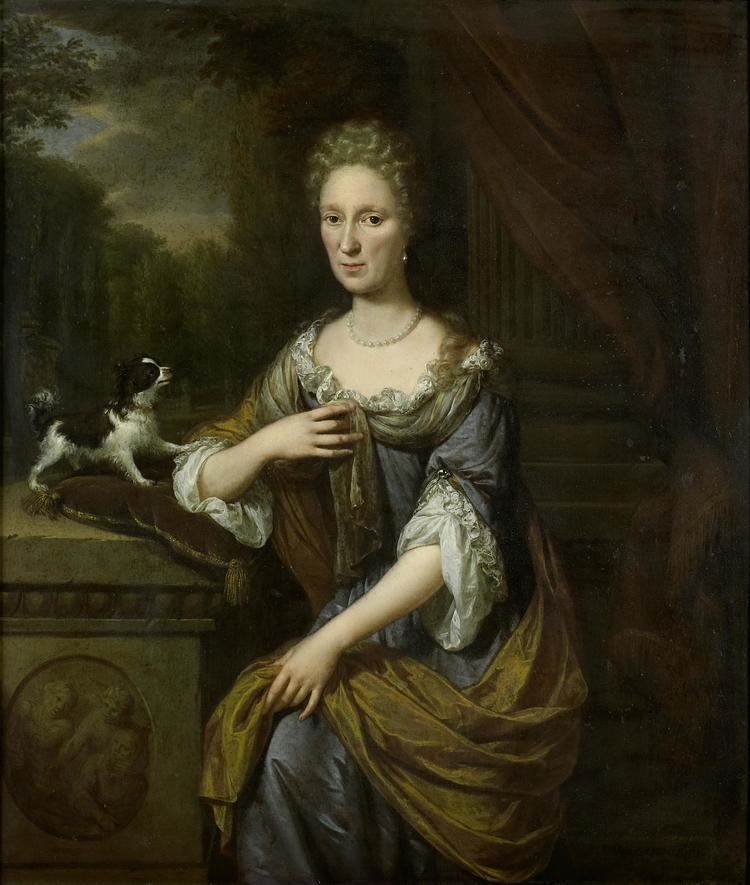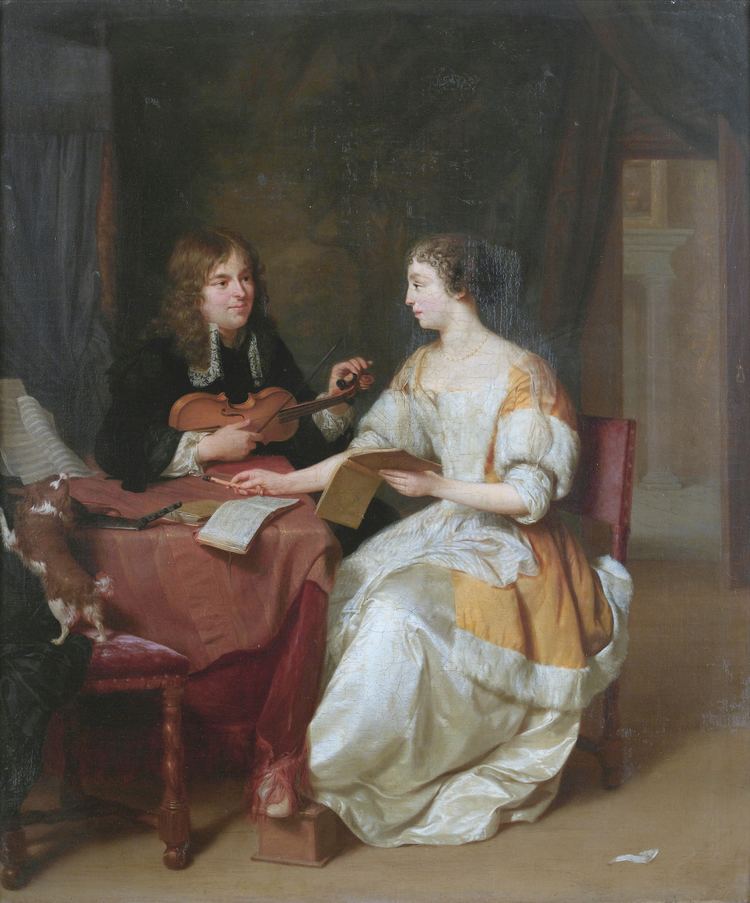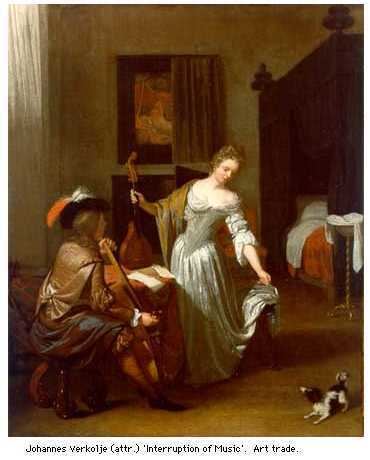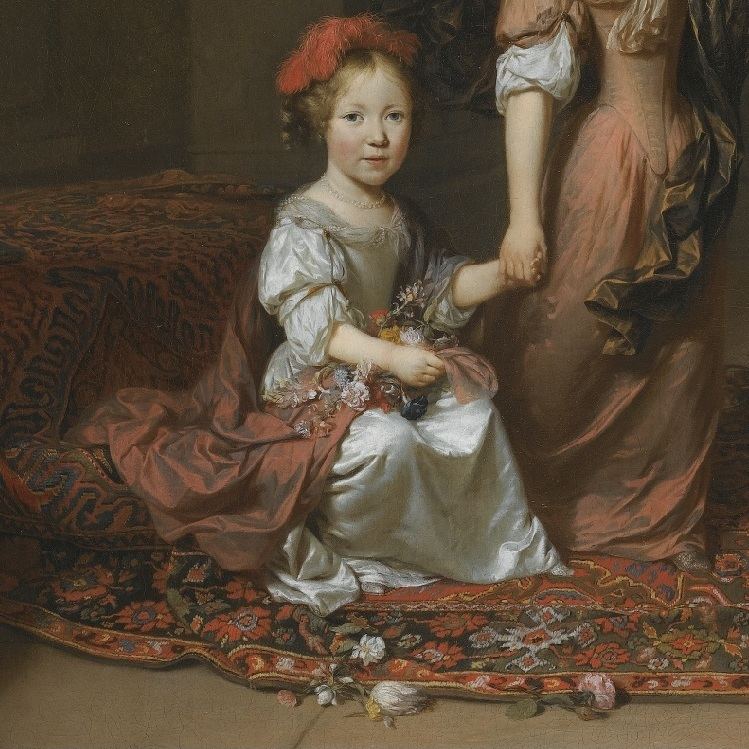Name Jan Verkolje | Children Nikolaas Verkolje | |
 | ||
Died May 8, 1693, Delft, Netherlands Similar People Nikolaas Verkolje, Antonie van Leeuwenhoek, Cornelis Tromp, Maarten Tromp, Balthasar van der Ast | ||
Jan verkolje
Johannes, or Jan Verkolje (Amsterdam, baptized on 27 February 1650 – Delft, 8 May 1693) was a Dutch Golden Age painter and engraver, often called Jan I to distinguish him from his son Jan II. He is known for his portraits and genre pieces.
Contents

Biography

Verkolje was baptized in the Nieuwezijds Kapel as the son of Benjamin Jacobsz, a locksmith, and Maria Tonnes. The couple lived not far away in Regulierbreestraat, near the Munttoren. Within the same year his brother Jacob was baptised.

Jan became a student of Jan Andrea Lievens (1644–1680), the son of Jan Lievens. According to Arnold Houbraken, he was a wunderkind, whose talent started with an accident. As a child playing with darts, he had the unfortunate accident of receiving a dart in his heel, which began to fester so that he needed to lie in bed for months to alleviate the infection. While in bed a man named Bronkhorst gave him some prints to copy, and thus he took up drawing, and spent the rest of his career learning drawing techniques on his own. With the same amount of dedication, the young Jan Verkolje learned the art of perspective within a month. Then he took up painting in oils, and copied the works of Gerard van Zyl, also known as Gerards. He became so good at imitating his style, that when he finally took art lessons from Jan Lievensz the younger, Lievens recognized Gerards style immediately and later asked him to finish the unfinished paintings he bought from the estate of Gerards after his death. Lievens then offered him a "present", namely to witness the sale of these paintings, whereby the buyers claimed they were too good to be by Lievens and thus must have been by Gerards. They were then sold as Gerards paintings. This experience only fueled the artistic fervor of Verkolje further.

Houbraken also claimed that Verkolje discovered the mezzotint technique on his own, and both Abraham Bloteling and Wallerant Vaillant marvelled at his ability. In the rampjaar 1672 he moved from Amsterdam via Schipluiden to Delft, where he married in October 1672 with Judick Voorheul. He became a member of the Guild of St. Luke in 1673 serving as its dean between 1678 and 1688. Verkolje became very successful and would sell to the court in the Hague.

His sons Nikolaas Verkolje (1673 Delft - † 1746 Amsterdam) and Jan II (1683 Delft - † 1755 Amsterdam) also became painters. His other pupils were Albertus van der Burch, Joan van der Spriet, Willem Verschuring, and Thomas van der Wilt. In addition to this list of names, Houbraken also mentions Henrik Steenwinkel.
Verkolje died in Delft in 1693 aged 43 at the peak of his fame, and was buried in the Oude Kerk (Delft). He left a wife, three sons and two daughters. Houbraken intended to write a biographical sketch of Nicolaas, but never got that far; he died in 1719 before publication of Volume III, which contains Jan Verkolje's biographical sketch.
